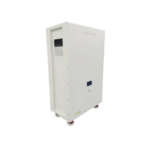
Lithium Cell Production Process
Description
The manufacturing process of Lithium cell can generally be divided into three stages:electrode preparation,battery assembly,and electrochemical activation,specifically,as follows:
1.Electrode preparation
1.1 Positive electrode ingredients
Bake the conductive agent at about 120 ℃ for 8 hours,and bake the binder PVDF at about 80 ℃ for 8 hours,the baking of the active material depends on the incoming material status and process,when using wet process technology,PVDF adhesive solution should be prepared in advance,and the feeding sequence,time,proportion,as well as the rotation speed,stirring vacuum degree,and temperature of the equipment should be strictly controlled.the particle size and viscosity of the slurry should be regularly checked,and the slurry should be sieved when transferred out.
1.2 Negative electrode ingredients
The conventional negative electrode system is a water-based mixture,with deionized water as the solvent,and requires a conductivity of ≤ 1 US/cm,first prepare the adhesive solution,pour graphite and conductive agent into the mixer for dry mixing,then pour the adhesive solution and vacuum stir,and finally pour it into SBR for rapid short-term stirring,controlling parameters such as viscosity,particle size, and solid content.
2.Coating 
2.1 Positive electrode coating
Squeeze or spray the positive electrode slurry on both sides of the aluminum current collector,control the density on one side,set the appropriate coating oven temperature,adjust the transfer coating roller speed ratio and gap position to thin the thickness,control the coating moisture,workshop temperature ≤ 30 ℃,humidity ≤ 25%.
2.2 Negative electrode coating
Squeeze or spray the negative electrode slurry on both sides of the copper current collector,control the single-sided density,coating oven temperature,transfer roller speed ratio,gap thinning thickness,and coating moisture,with workshop temperature ≤ 30 ℃ and humidity ≤ 25%.
3.Compaction and slitting
3.1 Compaction
The coated electrode is compacted using two processes,hot pressing and cold pressing,to improve the energy density of the battery,control parameters such as compaction density,rebound rate, and elongation rate,and ensure that the surface of the electrode is free of defects such as chips and hard lumps.
3.2 Splitting
Cut the entire pole piece into small strips of uniform width,paying attention to the burrs on the pole piece,it is necessary to fully inspect the burrs in the X and Y directions of the pole piece.
4.Lithium Cell assembly
4.1 Winding
In the production of square and circular lithium batteries,the strip-shaped positive and negative electrode sheets and separators are rolled into cylindrical cores by a winding machine,with the negative electrode sheet completely covering the positive electrode sheet and the separator completely covering the negative electrode sheet.
4.2 Stacking
In the production of soft pack batteries,positive and negative electrode sheets and separators are stacked in order to form electrode cores after adhesive bonding is completed.
4.3 Shell insertion and welding
Insert the core or stacked core into the battery cell shell,and then perform welding to connect the positive and negative electrode ears to the electrodes on the shell.
4.4 Injection and packaging
Inject a certain amount of electrolyte into the battery cell through an injection machine,and then package it to complete the functional structure of the battery cell.
5.Electrochemical activation
5.1 Chemical conversion
Charge the battery to a relatively low voltage and wait for the electrolyte to fully wet,during this process,a solid electrolyte interface (SEI) film is formed on the negative electrode surface to prevent side reactions and reduce the loss of active lithium,the charging and discharging steps are completed slowly to ensure that the thickness and composition of the SEI film are optimized.
5.2 Aging
Checking the leakage current of the battery may require an additional 1-2 weeks,during which many electrochemical cyclers and a large amount of storage space are needed.
5.3 Capacity division
Grouping based on the leakage current of each battery cell and the rated capacity after forming a cycle,reducing the capacity difference between batteries, and grouping batteries with similar performance into the same group for easy assembly of subsequent battery packs

